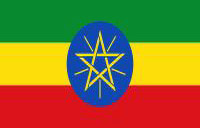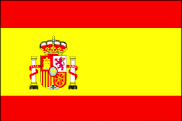
International Committee of the Red Cross
The Nobel Peace Prize 1917, 1944, 1963
The Prize in 1963 was awarded jointly with the League of Red Cross Societies
In innumerable countries, neutral, impartial, independent. Worldwide, help people affected by conflict, armed violence; promote rules of war -
International humanitarian law. Geneva Conventions, Additional Protocols protect civilians, define parameters - what is acceptable and unacceptable on battlefield and beyond.
"All civilians should be protected and respected. It's the law."
Biography
International Committee of the Red Cross Peace 1917, 1944, and 1963 info by Morgan McGuirk MA
The International Committee of the Red Cross (ICRC) has been awarded the Nobel Peace Prize three times in 1917, 1944, and 1963. It is a private humanitarian organization founded in 1863 in Geneva, Switzerland with the goal of protecting victims during conflicts around the world, including those held prisoner or wounded in war, refugees, and civilians.i
The ICRC was founded by Henry Dunant with the mission of establishing an organization to protect and treat individuals wounded in battle because no organization existed at that time. In 1859, Dunant, a Swiss businessman from Geneva, traveled to the town of Solferino in present-day Italy to meet with French emperor Napoleon III to discuss his problems conducting business in Algeria, which was controlled by France during this time. During Dunant’s visit, he witnessed the Battle of Solferino, a major battle in the Second Italian War of Independence. The Battle of Solferino killed or injured over 40,000 soldiers in a single day, who did not have adequate medical care for the great number of injuries. Dunant was compelled to help those who were injured, staying for several days to gather individuals in the local community who could provide care.ii
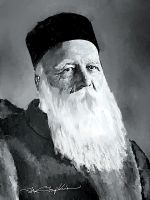
Painting of Henry Dunant, painted in 1939 for the ICRC,
source: Library of Congress
From his experience in Solferino, Dunant published the book A Memory of Solferino in 1862, describing the pain and distress of the soldiers involved in the battle and the coming together of those willing to help. Dunant wrote:iii
“Would it not be possible, in time of peace and quiet, to form relief societies for the purpose of having care given to the wounded in wartime by zealous, devoted and thoroughly qualified volunteers?”
The publication of this book eventually led to the formation of the ICRC and the Geneva Convention, where humanitarian treatment in times of war was established. In 1863, the committee entitled the “Committee of Five” was created, a group of five established men from Geneva who explored the practicality of founding an organization devoted to helping those in need on an international level. These men quickly renamed the committee the “International Committee for Relief of the Wounded” to better reflect their mission and they held an international conference later that year with the goal of improving medical care for those in battle. Representatives from present-day United Kingdom, the Netherlands, Austria, Spain, Italy, Russia, Sweden, and Norway attended. Overall, the committee developed several resolutions to ensure fair care of the wounded and sick involved in battle, such as supplying personnel and equipment to those in need. Additionally, the committee created its official flag to indicate where medical care personnel are located while working in the battlefield. The flag is white with a red cross, a reversal of the flag of Switzerland for its involvement in establishing the committee.iv
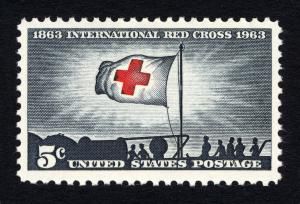
United States stamp for the ICRC,
source: istock photo
The following year in 1864 the first official Geneva Convention took place. Additional countries were invited to attend, including all of the countries in Europe, the United States, and Mexico. The convention adopted official rules for countries to abide by when becoming a member of the Geneva Convention, in the hopes of guaranteeing protection and fairness for the treatment of those involved in battle. In 1876, the current name of the committee, the International Committee of the Red Cross, was adopted in honor of the committee’s flag.
Soon after, the Red Cross expanded to the United States through Clara Barton who founded the American chapter in 1881. Barton’s previous experience working as a nurse during the American Civil War and subsequent trip to Geneva in 1869 sparked her interest, as she was introduced to the Red Cross and inspired to establish an American chapter. Upon returning to the United States, Barton received pushback against expanding the Red Cross because a majority of Americans contended a conflict like the Civil War would never happen again. Therefore, Barton’s cause instead gained momentum by asserting the Red Cross could respond to alternative disasters including earthquakes, fires, tornados, and hurricanes. Later, support for the American chapter grew because of the Spanish-American War in 1898 and due to a variety of catastrophic floods, famines, and disease epidemics across the United States during the 1890s. Barton’s work greatly expanded the work of the Red Cross throughout the United States and she presided over the American chapter until 1904.v

United States stamp of Clara Barton for the American Red Cross,
source: Wikimedia
The Red Cross first gained international recognition in 1901 as Dunant was one of the awardees of the first Nobel Peace Prize for his great work establishing the organization.vi Later, the Red Cross itself was recognized for the work done during World War I. Red Cross chapters around the world worked closely together to provide care and resources to the European countries involved in the war. Also, the ICRC played a major role in delivering messages to and from prisoners of war, which led to the peaceful exchange of over 200,000 prisoners. The ICRC also monitored and responded to complaints of countries violating the Geneva Convention. The ICRC worked to mitigate these human rights violations and escalations between countries during the war. In 1917, the ICRC was awarded the only Nobel Peace Prize during the war for its work.vii
During World War II, the ICRC again provided great assistance to both those involved in the war and to the general public. Unfortunately, due to the Nazi’s control over the German Red Cross agency, the ICRC could not provide care to those under German control throughout much of the war. However, in November of 1943 the ICRC finally gained permission to send packages and identify over 100,000 individuals detained in German concentration camps. In 1944, the ICRC was awarded a second Nobel Peace Prize for its efforts during the war, and again was the only recipient of the Peace Prize during the war.viii
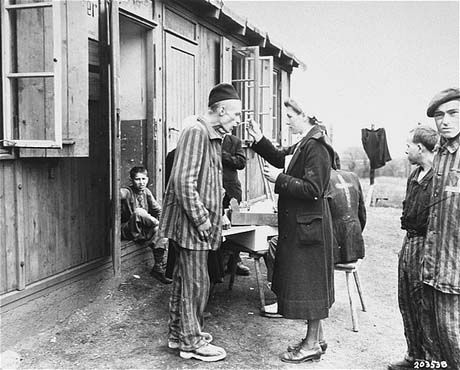
Finally, one hundred years after the ICRC was formed, it received its third Nobel Peace Prize in 1963, along with the League of Red Cross Societies, which was created to focus on more broad relief measures during peacetime, such as health epidemics or natural disasters and preventative healthcare and training.ix At the ICRC’s twentieth global conference in 1965, a movement to adopt specific fundamental principles began, officially adopted in 1986 after an extensive and collaborative process. There are seven principles, each representing an integral part of the ICRC’s mission:x
- Humanity – Assist without discrimination to prevent and alleviate human suffering
- Impartiality – Not discriminate by nationality, race, religion, class, or political beliefs
- Neutrality – Not engage in controversies of a biased or prejudiced nature
- Independence – Maintain autonomy to provide services to all in need
- Voluntary service – Not motivated by any incentive or gain
- Unity – Only one Red Cross society is to represent a country
- Universality – All Red Cross societies are equal in representation and responsibility
The ICRC expanded globally to many countries during the 1960s and 1970s when many countries were decolonized. In response to this growth, the ICRC was renamed the League of Red Cross and Red Crescent Societies in 1983. Although the cross and crescent symbols are not intended to represent religious faith, the crescent was added to better reflect the many newly incorporated countries that had majority Muslim populations. Later, a “neutral” symbol of the Red Crystal was added to be more inclusive globally.xi Finally, additional symbols are also used in specific countries, the Red Lion with Sun in Iran and the Red Shield of David in Israel.xii

International Red Crescent Society Symbol,
source: International Federation of Red Cross and Red Crescent Societies

International Red Crystal Society Symbol,
source: International Federation of Red Cross and Red Crescent Societies

International Red Lion with Sun Society Symbol,
source: International Federation of Red Cross and Red Crescent Societies

International Red Shield of David Society Symbol,
source: International Federation of Red Cross and Red Crescent Societies
In 1990 the ICRC was the first private organization granted by the United Nations General Assembly to receive an “observer status,” meaning the ICRC as a non-member of the assembly could participate in assembly committees. Also, in 1993 the ICRC began allowing those who were not Swiss to serve on its committee of delegates, further expanding its work internationally.xiii To this day, the Red Cross continues to provide aid to over 90 countries and has over 18,000 staff. As of 2020, its key operations include: the Central African Republic, the Democratic Republic of the Congo, Iraq, Lake Chad, Myanmar, South Sudan, Syria, and Yemen.xiv.
- “The International Committee of the Red Cross.” Nobel Media AB. Mon. 27 Jan 2020.
- Ibid. “The International Committee of the Red Cross.”
- Henry Dunant. A Memory of Solferino, translated from French by the American Red Cross, edited by the International Committee of the Red Cross.
- Angela Bennett. “The Geneva Convention. The Hidden Origins of the Red Cross.” Sutton Publishing, Gloucestershire 2005.
- “Founder Clara Barton.” The American Red Cross. 27 Jan 2020.
- Ibid. “The International Committee of the Red Cross.”
- “ICRC in WWI.” International Committee of the Red Cross. 27 Jan 2020. < https://www.icrc.org/en/doc/resources/documents/misc/57jqgq.htm>
- The Report of the International Committee of the Red Cross on its activities during the second world war (September 1, 1939 – June 30, 1947) Geneva 1948.
- “History of the Formation of the IFRC.” International Federation of Red Cross. 28 Jan 2020.
- “Fundamental Principles.” International Committee of the Red Cross. 30 Jan 2020.
- International Committee of the Red Cross. 30 Jan 2020.
- “Red Cross votes to admit Israel.” BBC News. 22 Jun 2006. < http://news.bbc.co.uk/2/hi/europe/5104680.stm>
- Ibid. “The International Committee of the Red Cross.”
- “The ICRC Worldwide.” 31 Jan 2020. < https://www.icrc.org/en/where-we-work>
Discover Your Abilities and Aspirations!
 $10 $25 $50 $100 Other
$10 $25 $50 $100 Other
Tax Exempt 501(c)3 Non-Profit Organization
Any Currency
“…the peace that is found in libraries and laboratories…” - Louis Pasteur
Copyright © 2023 Ganga Library Inc. All Rights reserved.;

Emblem of the International Committee of the Red Cross with the official acronym CICR in French ("Comité international de la Croix-Rouge" [1]) and Spanish ("Comité Internacional de la Cruz Roja").
Name: Comité international de la Croix Rouge (International Committee of the Red Cross)
Founded: 1863 in Geneva, Switzerland
Residence at the time of the award: Geneva, Switzerland
Portion of Cash: 1917: 1/1, 1944: 1/1, 1963: 1/2
Biography
Images



